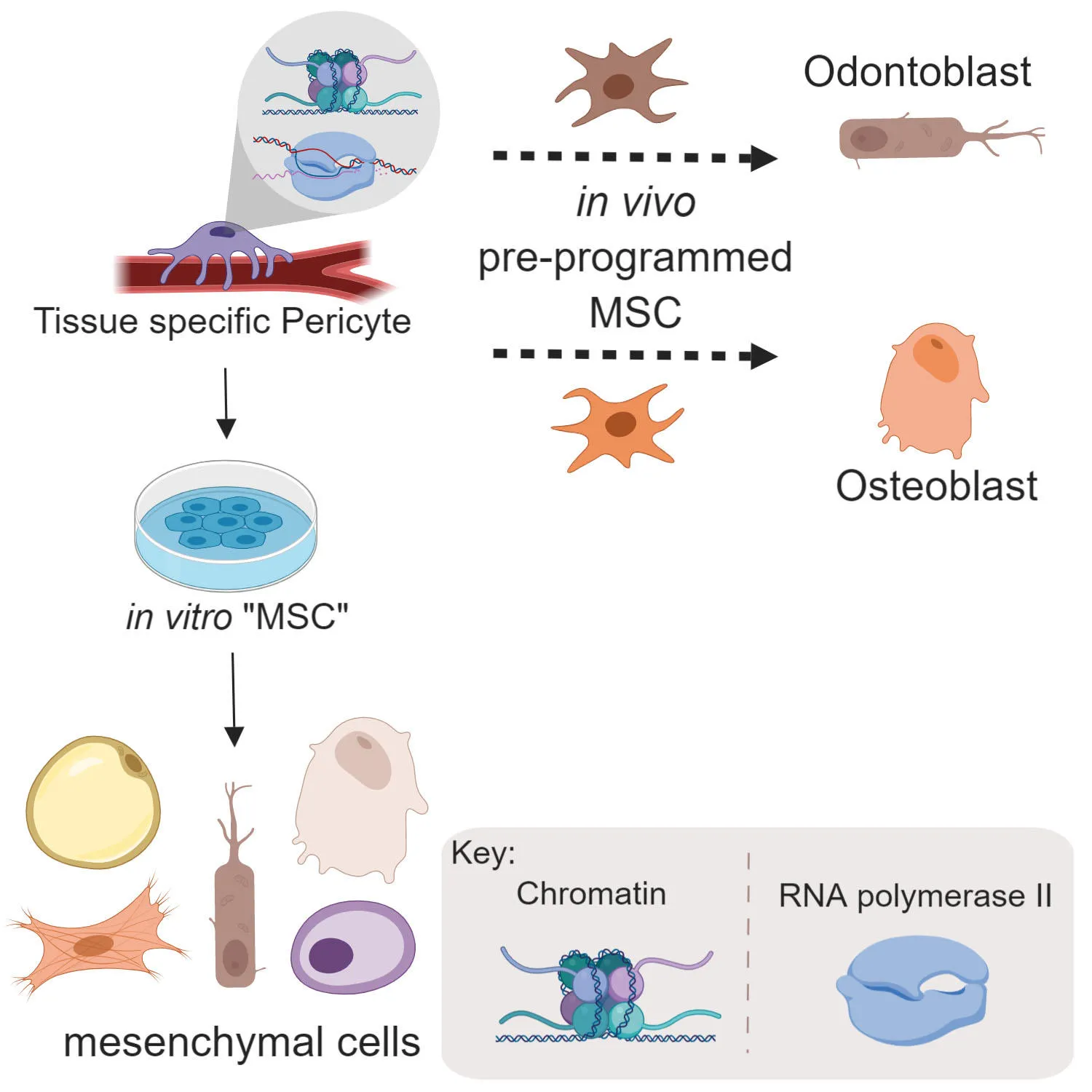11 July 2019
Perivascular-Derived Mesenchymal Stem Cells
In a review published in the Journal of Dental Research the molecular mechanisms that operate to restrict pericyte-derived MSC differentiation are discussed together with the consequences for the therapeutic use of MSCs.

Stem cells are known to be present in the stroma (connective tissue) of most tissues and organs. These cells are collectively known as mesenchymal stem cells (MSCs) and they share common attributes including their ability to give rise to multiple mature mesenchymal cell types such as odontoblasts, osteoblasts, myoblasts, and chondrocytes following culture. This ability to differentiate into multiple cell types has made MSCs an attractive cell population for use in numerous regenerative applications.
A number of experimental observations identified cells intimately associated with the vasculature (pericytes) that when isolated and expanded in culture behaved as mesenchymal stem cells (MSCs). Following these observations, genetic lineage tracing studies that followed pericyte differentiation during tissue homeostasis, regeneration and repair indicated that they can also give rise to differentiate cell types in a tissue-dependent context. These experiments firmly established pericytes as a source of MSC precursors in multiple tissues including as tooth, bone, and skeletal muscle.
The ubiquitous nature of pericytes makes them an obvious source of tissue-resident stem cells, however the question of how their differentiation is restricted in different tissues and how and why this is apparently lost following culture is currently unclear.
In a review published in the Journal of Dental Research the molecular mechanisms that operate to restrict pericyte-derived MSC differentiation are discussed together with the consequences for the therapeutic use of MSCs.
Permanent DOI : https://doi.org/10.1177/0022034519862258




